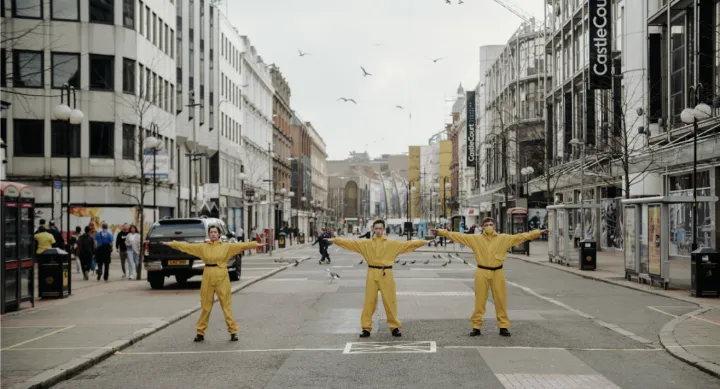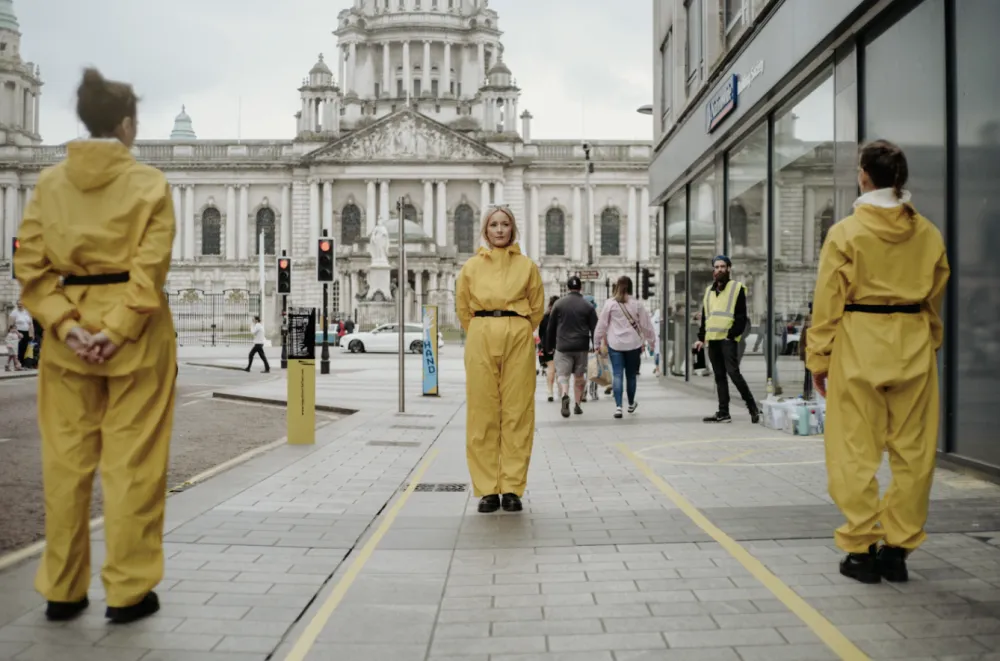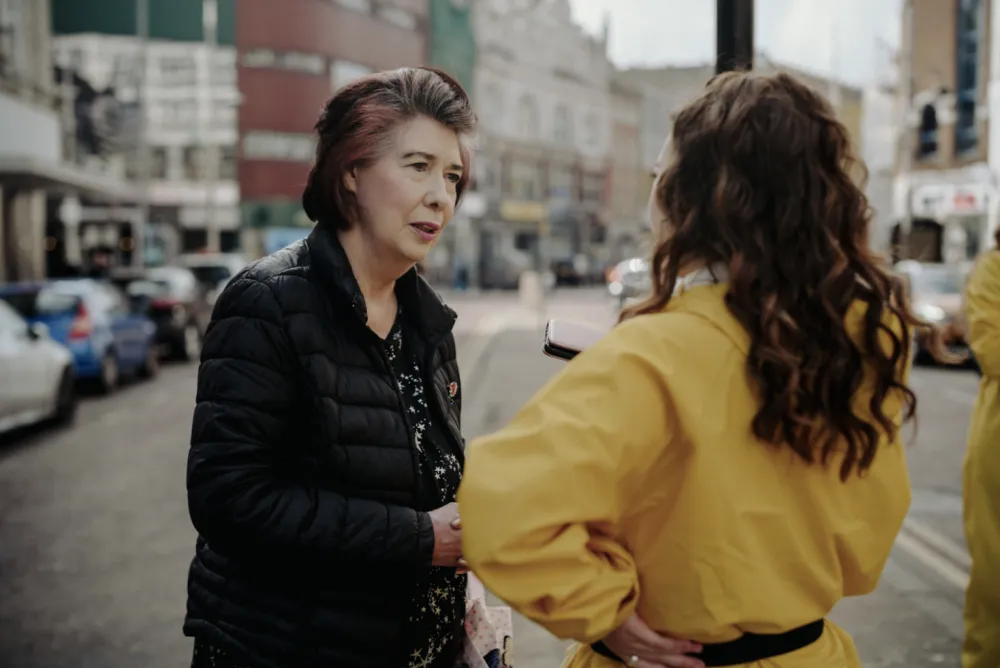
Applying last-minute lipstick, saved by the Scottish, and (luckily) losing only one sense — read the stories of Belfast’s surviving generation
By Neerul Gupta
In March 2022, Associate Professor of Design Kate Catterall landed in Belfast, UK to rehearse and launch her free, citywide, 12-hour commemorative event “Drawing the Ring of Steel.” This past September, she was honored with the UT Co-op Research Excellence Award in Creative Research for her scholastic journey and work. The extremely competitive award honors one professor annually across the university and is one of UT's most prominent symbols of peer recognition. For over half a decade of research, collaboration, and community-building, Catterall is honored to receive an award that celebrates her extraordinary achievements in exhuming Belfast’s hidden history.
Erected in 1972 by the British Army, the Ring of Steel security cordon barricaded the Belfast City Centre for 20 years to mitigate the impact of the Irish Republican Army car-bombing campaign. All entering or exiting the center had to pass pat-downs and security checks by armed officers searching for weapons. Fear of discrimination-based violence became an intimate part of life in Belfast. The 1998 Peace Agreement led to dismantling the Ring of Steel, and conversations about the Ring’s presence and impact on community life also became a thing of the past. For 50 years, Belfast’s leaders and residents wiped the cordon out of public consciousness.

“There’s been a policy of moving on,” Catterall noted. “But I wouldn’t say the society has really moved on.” Born and raised in Belfast, she was determined to restart the conversation. In Drawing the Ring of Steel, Catterall wove together physical markings at the former checkpoint locations, actors performing search motions, and narrative-gathering to acknowledge the stories and struggles of those who crossed the Ring.
The event was six years in the making. In addition to studying archives and fundraising, Catterall held workshops to gauge public knowledge of the Ring and their appetite for remembering. She recalls one workshop that especially galvanized her project, where young attendees claimed there was no point in studying the Ring. After all, it hadn’t touched them or their loved one’s lives. Not likely, thought Catterall. She gave attendees a simple assignment: bring back a story about the Ring.
In the following session, every person came back with a first- or second-hand account of the Ring. A 19-year-old girl shared that, at her age, her mother was a key-holder and allowed security officers into her work building to search for fire bombs. The teenager didn’t realize her mother’s connection to the Ring until she asked.

An older woman remembered hearing a bomb scare in her dorm room and frantically applying lipstick before evacuating.
Why? Well, in case she met a nice boy outside. Catterall recalled the room filling with laughter. Through the giggles, Catterall found the inspiration to mobilize similar connections and transparencies in her project. “If everyone who encountered [Drawing the Ring of Steel] goes back home and talks about it, and some stories bubble up, that would be absolutely key,” she said. While there was a layer of Belfast invisible to those in their twenties and thirties, the past was very much alive for older generations.
With $40,000 in funds, 50 actors, and all the yellow chalk and costumes Catterall could fit in her suitcase, Drawing the Ring of Steel began. On March 24, 2022, from 8 a.m. to 8 p.m., people shared their stories.
A local poet recalled attempting to jump the security cordon with two Scottish tourists and getting caught by the army. Nervously seated in the back of a military tank, the woman remembered the tank walls shaking as rioters pelted the vehicle with bricks and petrol bombs. Thankfully, she survived to tell the tale and was dropped home by the soldiers. The woman thought that had she not been with the two Scottish men, she might have spent her night in jail.
One man found the turnstiles on the Ring’s entrances memorable. By only glancing at a photograph of the gate could he hear the clank clank clank of steel hitting steel. Memories of the Ring were both intellectual and visceral.

Some stories were more harrowing. Another man remembered during his childhood making eye contact with a policeman at the checkpoint near a heavily guarded working-class Catholic area. The policeman had a nice smile, he said. Just when his child self began to smile back, the officer was shot. Walking past this area decades later, the man sees flashes of the motionless policeman, the image often intruding his mind.
During a walking tour, Catterall stopped at an explosion site that precipitated the Ring. A woman on the tour noted that her sister had been caught in the explosion. Her sister was fine, the woman comforted the crowd. She just lost her hearing. In a limb-breaking conflict, losing only one sense was considered lucky.
Catterall went into the day with the goal of collecting 75 stories and came out of it with 750. While remembering the Ring may bring back less than fond memories, it also reminded people of the mundane and intimate moments that were inextricably tied to the cordon. Catterall’s work simultaneously acknowledged their pain and celebrated that they made it through an extraordinary time.
“It’s audible. It’s visible. It’s not just a memory. It’s much more than that. It’s inhabiting history,” Catterall said.

